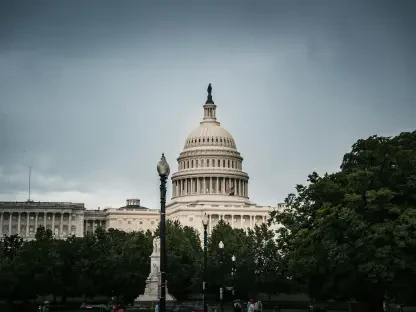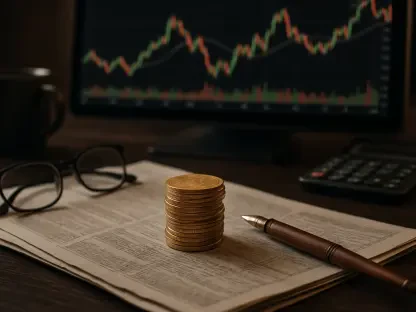The Federal Reserve’s upcoming Federal Open Market Committee (FOMC) meeting, scheduled for July 29-30, 2025, is set against a backdrop of economic complexity and anticipation. This gathering draws significant attention from economists, investors, and market analysts eager to decipher signs of the Federal Reserve’s future monetary policy direction. Central to this meeting is the question of whether the Federal Reserve will maintain the federal funds rate within the existing range of 4.25% to 4.5%. Expectations point towards stability in rates, underpinned by various economic factors influencing decision-making at the Federal Reserve. The FOMC’s resolution carries extensive ramifications for economic activity and financial market movements, serving as a critical communication channel for the Federal Reserve’s monetary stance.
The Economic Environment in Mid-2025
Exploring the economic landscape in the United States as of mid-2025 reveals a mixed scenario characterized by both promising and concerning indicators. On the one hand, the nation’s Gross Domestic Product (GDP) is witnessing a positive trend, with the Atlanta Fed estimating a 2.4% growth for the second quarter, signaling substantial economic expansion. On the flip side, the labor market reflects strength with the unemployment rate holding at a low 4.2%, though emerging layoffs hint at potential vulnerabilities. These indicators together construct a portrait of a dynamic yet uncertain economic climate. Inflation remains a significant focal point, with the Personal Consumption Expenditures (PCE) price index positioned at 2.6%, surpassing the Federal Reserve’s ideal inflation target of 2%. This figure, while improved from the staggering levels encountered in 2022, still persists as a source of concern for monetary policymakers aiming to align it closer to the target. Core inflation, which strategically excludes volatile categories like food and energy, is forecasted to reach 3.1% by the end of the year, influenced by factors such as tariffs affecting the broader economic environment.
Uncertainties arising from trade policies and fiscal matters continue to shape dialogues around inflation control and economic growth balancing. A central theme in ongoing discussions surrounds whether the Federal Reserve will choose to alter interest rates. Prevailing sentiment leans against a rate cut during the July meeting, supported by the Federal Reserve’s equity in a “wait-and-see” stance, enabling observation of evolving economic conditions before significant monetary adjustments. Notwithstanding, within the Federal Reserve, differing perspectives emerge. Notably, Fed Governor Christopher Waller expresses openness to rate reductions, contending that tariffs may suppress demand more visibly than they influence prices. This perspective gains relevance amid trade policy discussions and internal deliberations within the committee on timing and necessity for monetary intervention.
Key Observations and Policy Directions
Critical observations and expectations for the forthcoming FOMC meeting encompass decisions on interest rates, insights from economic projections, and the tone within the policy statement and ensuing press conference led by Fed Chair Jerome Powell. The general consensus indicates steadfastness in interest rates, yet attendees are poised for potential diverse opinions, notably from figures such as Waller. Economic forecasts presage a real GDP growth of 1.4% for 2025, reflecting a decline from 1.7% noted in March, alongside a projected unemployment rate rise to 4.5% from an earlier 4.4%. These projections underscore the pressing challenges and intricacies involved in managing sustained economic growth amid price pressures. Though the July meeting won’t produce a fresh “dot plot,” the June 2025 forecasts serve as critical reference points, exposing varying committee opinions concerning prospective interest rate reductions. While some members anticipate no rate cuts within this time, others advocate for one or two, reflecting the diverse perspectives within the Federal Reserve regarding future policy pathways.
Market participants closely monitor possible adjustments in these forecasts, analyzing how Chair Powell might interpret such changes during the press conference. The Federal Reserve’s official policy statement, marked by deliberately chosen phrasing, encapsulates its economic vision. Analysts will examine the language employed, particularly regarding inflationary dynamics and labor market narratives, for subtle shifts indicative of changes in the Fed’s stance. Powell’s press conference remarks, notable for his communication style and nuanced word choice, will hold significant weight as stakeholders search for insights shaping forthcoming policy actions. Powell is anticipated to reaffirm a data-dependent approach, whereby monetary policy decisions hinge on future economic indicators, notably those pertaining to inflation and employment figures.
Impact on Financial Markets and Broader Implications
As of mid-2025, the U.S. economic landscape presents both promising and concerning signs. The GDP is on an upswing, with the Atlanta Fed forecasting a 2.4% growth for the second quarter, indicating substantial expansion. Simultaneously, the labor market remains robust with an unemployment rate of 4.2%, although emerging layoffs reveal potential weaknesses. Together, these factors create a picture of a dynamic yet uncertain economic environment. Inflation remains a pressing issue, with the PCE price index at 2.6%, exceeding the Federal Reserve’s 2% target. Though improved from 2022’s highs, this still worries policymakers striving to lower it. Core inflation, excluding volatile sectors like food and energy, is projected to hit 3.1% by year-end, influenced by tariffs and other economic factors. Trade policies and fiscal issues add to inflation control discussions. The Federal Reserve leans towards maintaining current interest rates in July, adopting a “wait-and-see” approach. However, Fed Governor Christopher Waller is open to rate cuts, arguing tariffs may curb demand more than prices, reflecting internal debates on monetary intervention’s timing and necessity.









